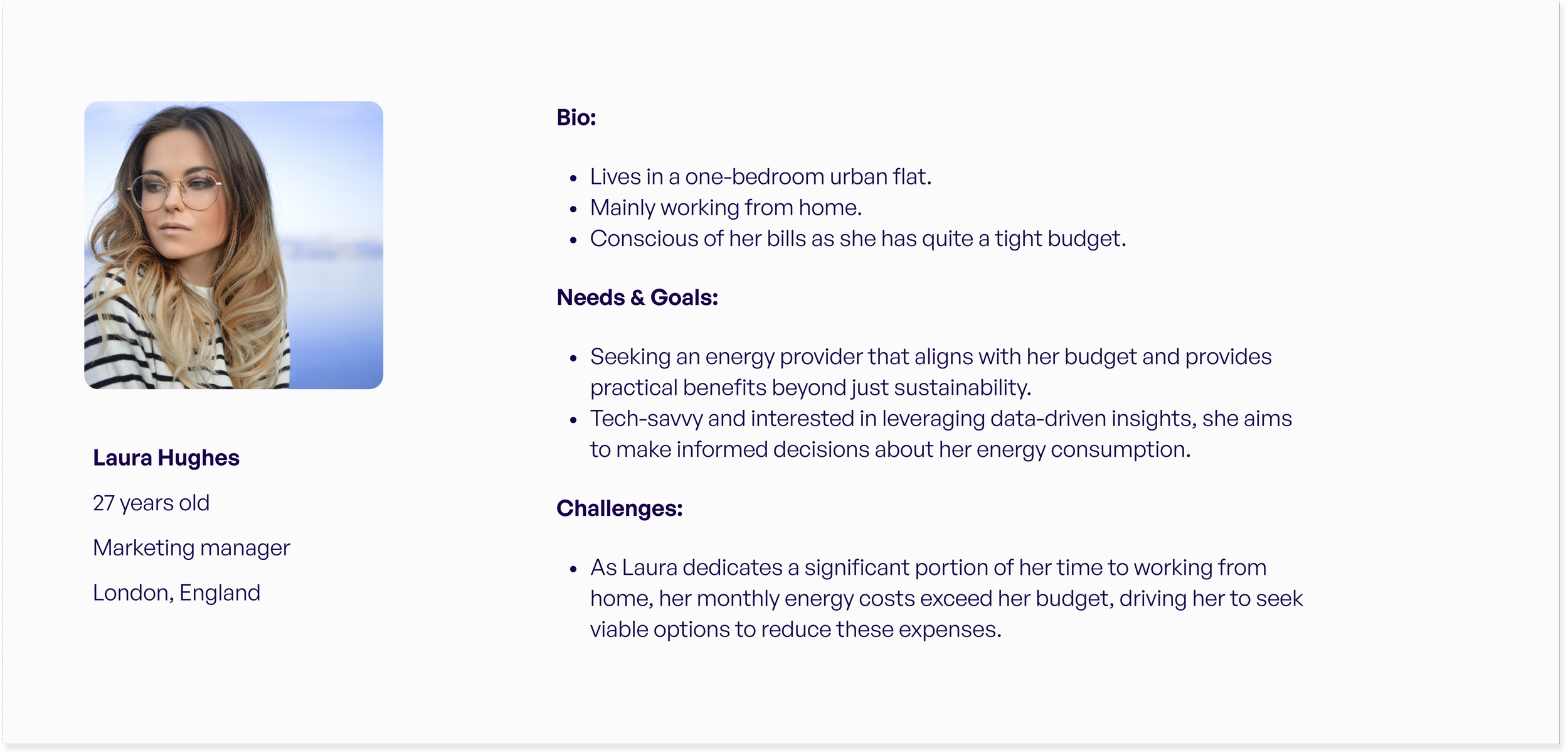Octopus Energy hackathon
Greener choices and wallet-friendly habits
Company
Octopus Energy
Project type
Hackathon
Role
Product Designer
Timeline
24 hours
CONTEXT
About Octopus Energy
Octopus Energy is a global energy provider championing the development of an affordable, sustainable energy system for the future. Currently, it supplies green energy to 5.3 million customers across 14 countries.
Problem space
To power our homes with 100% renewable energy, we need to make the most of abundant cheap green electrons when the sun is shining and the wind is blowing and use less when they’re scarce and expensive.
The team
DISCOVER
Our approach
As UX Designers, Mahin, Caroline and I undertook the role of Project Managers, facilitating the brainstorming session and collectively determining the research direction. The Data Scientists led the investigation into household energy expenditure patterns, while the Software Engineers brought our envisioned solution to life by implementing the design we provided.
Research
The data provided by the data scientists unveiled the following insights:
Key insights
DEFINE
The direction taken
Users might be unaware of peak energy prices, but aligning these costs with periods of high demand provides an opportunity to incentivise consumption adjustments for cost-saving benefits. Encouraging users to shift energy usage to times of abundant renewable energy not only promotes greener practices but also ensures more cost-effective spending.
In response to Octopus Energy's growing customer base, less attuned to sustainability, our team strategically tackled energy and living cost challenges. Our approach involved motivating users with personalised rewards tailored to their demographics, delivering substantial monetary benefits.
User persona
Problem statement
After conducting research, defining a direction, and understanding the user, a question emerged...
Competitive analysis
What sets Octopus Energy apart in the market, as determined through competitive analysis?
DESIGN
Brainstorming
The UX Design team sketched a concept, focusing on leveraging monetary gains as a strategy to attract new customers.
Wireframing
Next, we translated our initial sketches into wireframes.
Solution
Visualisation of optimal energy usage
By helping users understand when they can save money through green energy, we address their desires for competence, autonomy and relatedness. This feature enables users to make informed decisions about their energy consumption patterns, enhancing their sense of autonomy.
Customised savings goals
The introduction of personalised savings targets and the display of various items associated with users' energy-saving achievements leverages the gamification principle of accomplishment and rewards. Meeting these goals gives users a sense of fulfilment, and by utilising the money theoretically saved through reduced energy usage, they attain a tangible reward, further motivating them to remain attentive to their energy consumption.
Progress bar and energy usage tracking
The progression bar, indicating users' advancement toward their energy-saving goals, directly addresses the gamification principle of progress. As users witness their achievements, their motivation increases.
Additionally, the bar charts for tracking weekly and monthly energy usage provide users with insights into their consumption patterns, fostering a sense of competence and autonomy as they identify opportunities for improvement.
Energy-saving tips
Offering practical energy-saving tips complements the gamification approach by providing users with actionable steps. This empowers users to take charge of their energy efficiency, aligning with the desire for competence and autonomy. Users can integrate these tips into their daily routines, contributing to their sense of accomplishment and motivation.
DELIVER
Prototype
After an all-night effort by the UX Designers to complete the prototype on Figma, we passed the file to the software developers. They adeptly translated our design concepts into a tangible MVP, navigating coding complexities with remarkable speed and precision. Their dedication was apparent as they worked efficiently from the early morning through to the afternoon, turning our visions into functional reality.
On desktop, access ‘Inspect’ or ‘Developer tools’ and select the option to view in mobile size.
Tech Stack
Takeaways
Cross-functional collaboration
Our successful communication and collaboration with data scientists and software engineers, coupled with the integration of UX expertise, fostered a dynamic exchange of ideas. Agile methodologies facilitated swift iterations and adaptability, while data-driven decision-making and clear communication ensured efficient teamwork in a fast-paced environment.
Design thinking in a high-pressure environment
In a high-pressure setting, we applied design thinking principles to quickly identify user needs through empathetic research and generate diverse ideas. This approach allowed us to navigate tight time constraints effectively, ensuring our solutions remained user-centred and adaptable to real-time insights.
Personal growth and learning
The hackathon was a valuable learning experience, pushing me to adapt and refine my design skills. Leveraging my previous experience in team environments, particularly from working in kitchens, I efficiently navigated pressure, collaborated effectively and improved my problem-solving approaches. These insights will undoubtedly contribute to ongoing personal and professional growth, shaping my commitment to continuous learning in future collaborative projects.



















